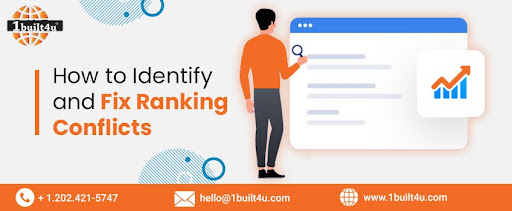
Customer Experience Optimization: Enhancing Digital Marketing Strategies
In the ever-evolving landscape of digital marketing, there's one element that consistently remains at the forefront: customer experience. The way businesses interact with and serve their customers online has a profound impact on their success. In this blog, we'll explore the significance of customer experience optimization and provide actionable strategies for digital marketing services companies to enhance their approaches.
The Power of Customer Experience in Digital Marketing
Customer experience isn't just a buzzword; it's a pivotal factor that can make or break your digital marketing efforts. In a world where customers have endless choices and limited attention spans, providing a seamless, engaging, and memorable experience is paramount. Here are some compelling reasons why customer experience optimization should be a core focus of your digital marketing strategy:
1) Competitive Advantage: Businesses that prioritize CX gain a competitive edge. Customers are more likely to choose a brand that offers a superior experience, even if it comes at a slightly higher cost.
2) Brand Loyalty: A positive CX fosters brand loyalty. Loyal customers are not only more likely to make repeat purchases but also become brand advocates, spreading the word about your products or services.
3) Customer Retention: It's often more cost-effective to retain existing customers than acquire new ones. A well-optimized CX strategy helps in reducing churn rates.
4) Word of Mouth Marketing: Satisfied customers share their experiences with friends and family, serving as an organic marketing channel that money can't buy.
5) Data-Driven Insights: By closely monitoring and analyzing CX metrics, digital marketers gain valuable insights into customer behavior and preferences, enabling data-driven decision-making.
Strategies for Customer Experience Optimization
Now that we've established the importance of CX, let's dive into some practical strategies that digital marketing companies can implement to enhance customer experiences:
1) Comprehensive Customer Journey Mapping: Understanding your customers' journey is the foundation of CX optimization. Map out each touchpoint, from initial awareness to post-purchase support. Identify pain points, opportunities for engagement, and moments of truth.
2) Personalization at Scale: Leverage data and AI to personalize content, product recommendations, and communication. Tailor your messaging to individual preferences, creating a more relevant and engaging experience.
3) User-Centric Web Design: A well-designed website is a cornerstone of a positive CX. Ensure that your site is intuitive, mobile-friendly, and optimized for fast loading times. Conduct regular usability testing to identify and address any issues.
4) Chatbots and AI-Powered Assistants: Implement chatbots and AI-powered assistants to provide instant support and information to customers. These tools can handle routine inquiries, freeing up human agents for more complex tasks.
5) Omnichannel Engagement: Meet customers where they are by offering a seamless omnichannel experience. Whether they're interacting through social media, email, chat, or phone, maintain consistency in messaging and service.
6) Feedback Loops and Surveys: Actively seek customer feedback through surveys, reviews, and feedback forms. Use this input to make improvements and show customers that their opinions matter.
7) Proactive Customer Support: Anticipate customer needs by offering proactive support. For example, if a customer frequently purchases a specific product, send a reminder when it's time to restock.
8) Social Listening: Monitor social media and online conversations to understand what customers are saying about your brand. Address concerns promptly and engage with positive feedback.
9) Continuous Testing and Optimization: Implement A/B testing and other optimization techniques to fine-tune your digital marketing campaigns and user experiences. What works today may not work tomorrow, so stay agile.
10) Transparency and Trust Building: Build trust by being transparent about your products, services, and pricing. Avoid deceptive practices that erode trust and damage your brand's reputation.
Measuring Success in Customer Experience Optimization
Customer Experience (CX) is the cornerstone of modern digital marketing. It's not just about attracting visitors and generating clicks; it's about creating meaningful interactions that foster loyalty and drive business growth. But how do you know if your CX optimization efforts are hitting the mark? To answer that question, you need effective ways to measure your success. In this blog, we'll explore key metrics and approaches to evaluate the impact of your CX optimization efforts.
Why Measure CX Success?
Before we delve into measuring CX success, let's understand why it's crucial for businesses and digital marketers alike:
1) Informed Decision-Making: Data-driven insights from CX measurements guide strategic decisions. They help you understand what's working and where improvements are needed.
2) Customer Satisfaction and Loyalty: Satisfied customers are more likely to become loyal patrons. Measuring CX allows you to gauge customer satisfaction and build long-term loyalty.
3) Competitive Edge: Exceptional CX can be a significant differentiator in a crowded marketplace. Monitoring and improving CX give you a competitive edge.
4) Resource Efficiency: Measuring CX helps identify areas where improvements are needed, preventing wasted resources on strategies that don't resonate with customers.
Key Metrics for Measuring CX Success
1) Customer Satisfaction (CSAT) Score: CSAT measures customer satisfaction with specific interactions or experiences. It often involves customers rating their satisfaction on a scale, providing an overall satisfaction level.
2) Net Promoter Score (NPS): NPS gauges customer loyalty by asking how likely customers are to recommend your product or service to others. Responses classify customers as Promoters, Passives, or Detractors, helping assess loyalty.
3) Customer Effort Score (CES): CES assesses the ease with which customers can achieve their goals when interacting with your company. It measures the level of effort required for tasks or issue resolutions.
4) Churn Rate: Churn rate indicates the percentage of customers who stop using your product or service within a specific period. High churn rates may signal CX issues.
5) Customer Lifetime Value (CLV): CLV estimates the total revenue a business can expect from a customer over their entire relationship. Higher CLV indicates successful CX that nurtures long-term relationships.
Approaches to Measuring CX Success
1) Surveys and Feedback Forms: Use surveys, feedback forms, and post-interaction questionnaires to collect quantitative and qualitative data. Customers can rate their experiences and provide comments and suggestions.
2) Social Listening: Monitor social media platforms, review sites, and online forums to gain insights into customer sentiments about your brand. Analyzing sentiment helps you address concerns promptly.
3) User Testing: Conduct usability testing with real users to identify pain points and areas for improvement in your digital assets, such as websites and apps.
4) Customer Journey Analysis: Track customer journeys across touchpoints to identify friction points and optimization opportunities. Visualizing the customer journey enhances understanding.
5) A/B Testing: Implement A/B testing to compare variations of webpages, emails, or marketing campaigns. It helps identify elements that lead to better CX and conversion rates.
6) Heatmaps and Analytics: Utilize heatmaps and web analytics tools to visualize user behavior on your website. Heatmaps show where users click, move, and spend the most time, revealing engagement patterns.
Conclusion
In today's digital landscape, customer experience optimization is not just an option; it's a necessity. Digital marketing companies that prioritize CX gain a competitive edge, foster brand loyalty, and drive business growth. By implementing the strategies outlined in this blog and continuously monitoring and optimizing the customer journey, you can create a digital marketing strategy that not only attracts customers but keeps them coming back for more.
Remember, in the digital age, the customer is at the center of it all. The better the experience you provide, the more likely you are to succeed in a highly competitive market. For more information, visit 1built4u.com .





